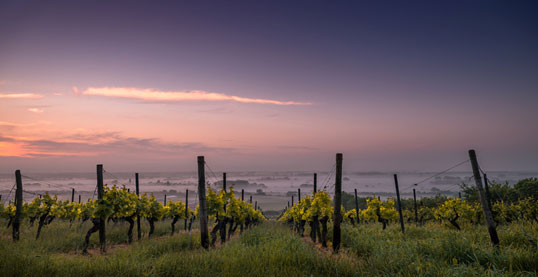Wine – a drink that many of us have grown to know and love. It is no secret that it’s great taste stems from fermented grapes, but where did it all begin? How has wine become so increasingly popular over thousands of years?
There are many companies that specialize in knowledge and history of wine, such as twelve by seventy five who are the leading experts of wine in the UK who helped with the research of this article.
No other drink has had quite the impact on society than wine has. It has reached out to various different cultures and religions across Europe, and is commonly used in the Catholic Church as a replacement for the blood of Christ. Not only this, but it is said that the western society built it’s foundations on the competitive industry that wine brings. There aren’t many other drinks that have created such an impact.
Although no one is certain as to where it all began, according to fable, a princess ‘accidentally’ discovered wine as early as 6000 BC when she lost favour with the King. She was so overwhelmed with shame, that she ate some spoiled grapes in attempt to end her life. However, this didn’t go to plan and she just ended up incredibly drunk. So drunk, that she passed out and awoke to a trouble-free life.
On a more scientific note, wine can be traced back to 60 million year old fossils, which proves that our pre-human ancestors realised that older grapes were more desirable and had potential to create something wonderful.
A few thousand years later and wine was spreading across the ancient world. Hieroglyphics from the Predynastic era of the Egyptian Pharaohs show that they were quite the binge drinkers. The Pharaohs were far more interested in the quantity rather than quality of their wine.
The Egyptians began to pick up their own tricks when it came to creating wine, using trellises protected by sunlight and learning that the last 100 days of harvest were most vital. Once picked, the grapes were pressed by being trod on in oppose to using a stone which resulted in a far more bitter tasting wine.
Following this, there was a second pressing of the wine, which involved four men pulling a stretched linen slough and another man ensuring that no sacred wine was spilt. Nowadays, only champagne requires a second process in order to increase the amount of bubbles in the bottle.
The Egyptians had three grades of wine, which could then be made into different kinds (red/white/dry/sweet) after being left in a trough to ferment. These grades were:
- Free Run Must: Little of this was collected, but it was a very sweet long lasting wine
- First Wine Must: This came from the treading and was about 2/3 of the juice
- Second Run Must: This came from the additional pressing
To achieve a drink with a light consistency, it would be fermented for a short amount of time (a few days). If you wanted a heavy final product it would have to be fermented for a long time (several weeks), as well as being heated as this speeds up the conversion of sugar. You can read more interesting facts about wine on Thisdayinwinehistory.com.
Looks like we have a lot to thank the Egyptians for!
The next people to join in the wine craze were the Greeks. The Greeks discovered the nutritional benefits of drinking wine (well, it does come from fruit after all)… which is an excuse we still use today! Wine was so precious in ancient Greece that it became ‘The Juice of the Gods’. There is even a Greek God of wine, who is the son of Zeus and one of the most worshiped Gods to date.
The ancient Greek wine became so popular in Europe that vine cuttings from Greece’s grapes were transported so that others could grow their own quality wine. This, of course, means that many of the grape varieties we know today were fathered by the Greek varieties.
It is no well-kept secret that the Greeks like to mix their wine with water and to add honey and spices. Perhaps this is why so many delicious recipes involve wine today.
Now we have to thank the Greeks, too!
The Greek dominated the wine industry for quite some time, but a stable trade was not established until 1949 due to a series of wars disrupting the business.
It’s important not to forget the Romans, who made huge contributions to an easier winemaking process. They invented the wooden wine barrel and classified many varieties of grapes.
The amount of wine being produced was so great that in 92 AD Emperor Domitian demanded that half of the grape vines outside of Rome were to be uprooted.
Wine is still taken very seriously in Italian culture and was kept alive by the Roman Catholic Church during the Dark Ages after the fall of the Roman Empire.
When it comes to spreading word around Europe, this was down to the monks. Wine was required for Holy Communion, meaning the church transported the ‘good news’ all across Europe. It is still clear to see today that wine is very much a passion of Europe. The popularity of wine hasn’t grown much and the US public still remain largely beer drinkers. Both America and Australia did not seem to have much success when it came to producing wine due to the hostile environment, but times are still changing.
Over the last 150 years, wine making has been totally revolutionised as an art and science. With access to refrigeration, it has become easy for wineries to control the temperature of the fermentation process and produce high quality wines. Harvesting machines have allowed winemakers to expand their vineyards and have a far more efficient process. Although the wine industry faces the challenge of meeting the demands of an ever-larger market without losing the individual character of its wines, technology helps to ensure a consistent supply of quality wines.





 Bitcoin
Bitcoin  Ethereum
Ethereum  Tether
Tether  XRP
XRP  Solana
Solana  USDC
USDC  TRON
TRON  Lido Staked Ether
Lido Staked Ether  Cardano
Cardano  Avalanche
Avalanche  Toncoin
Toncoin